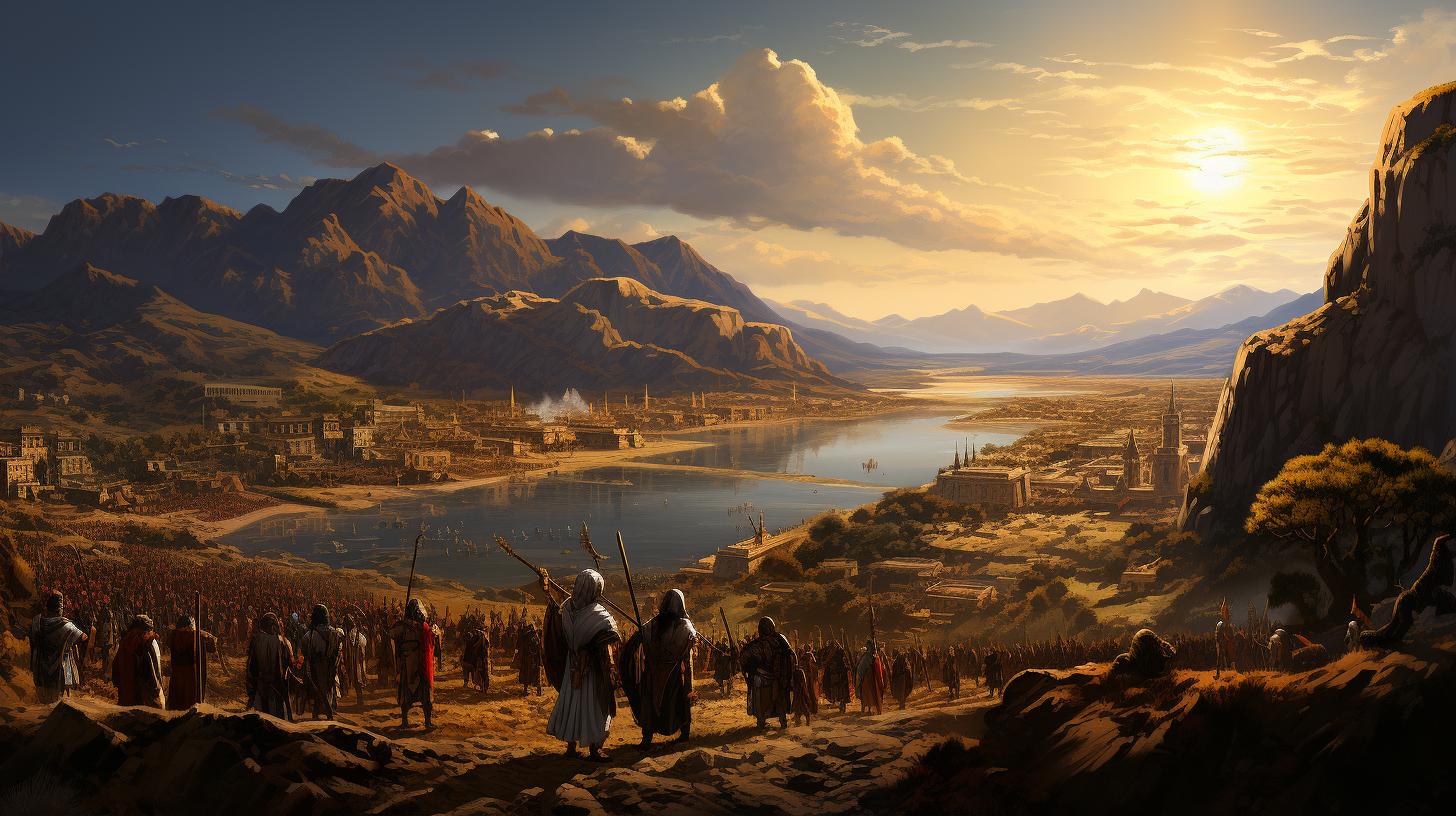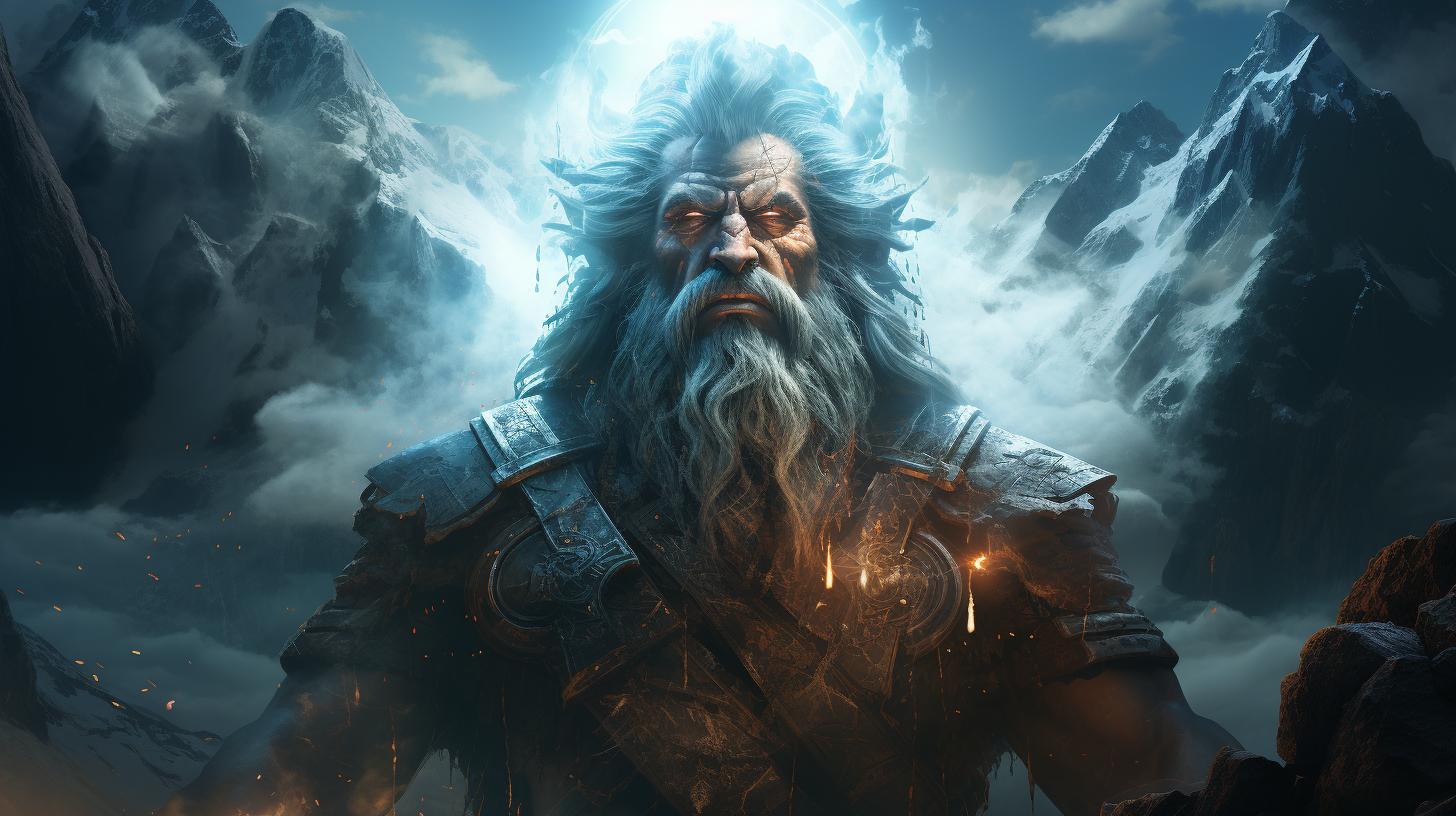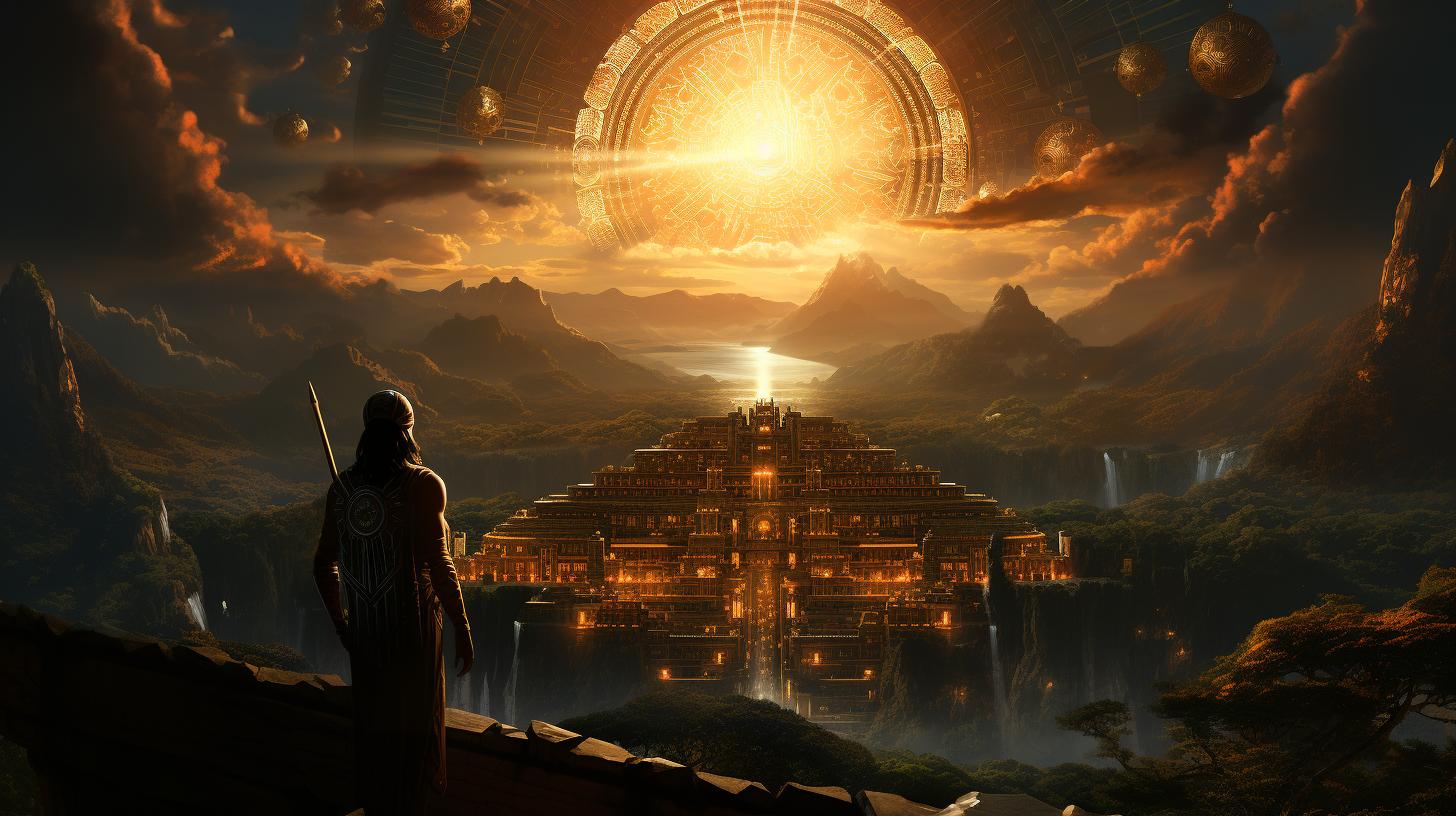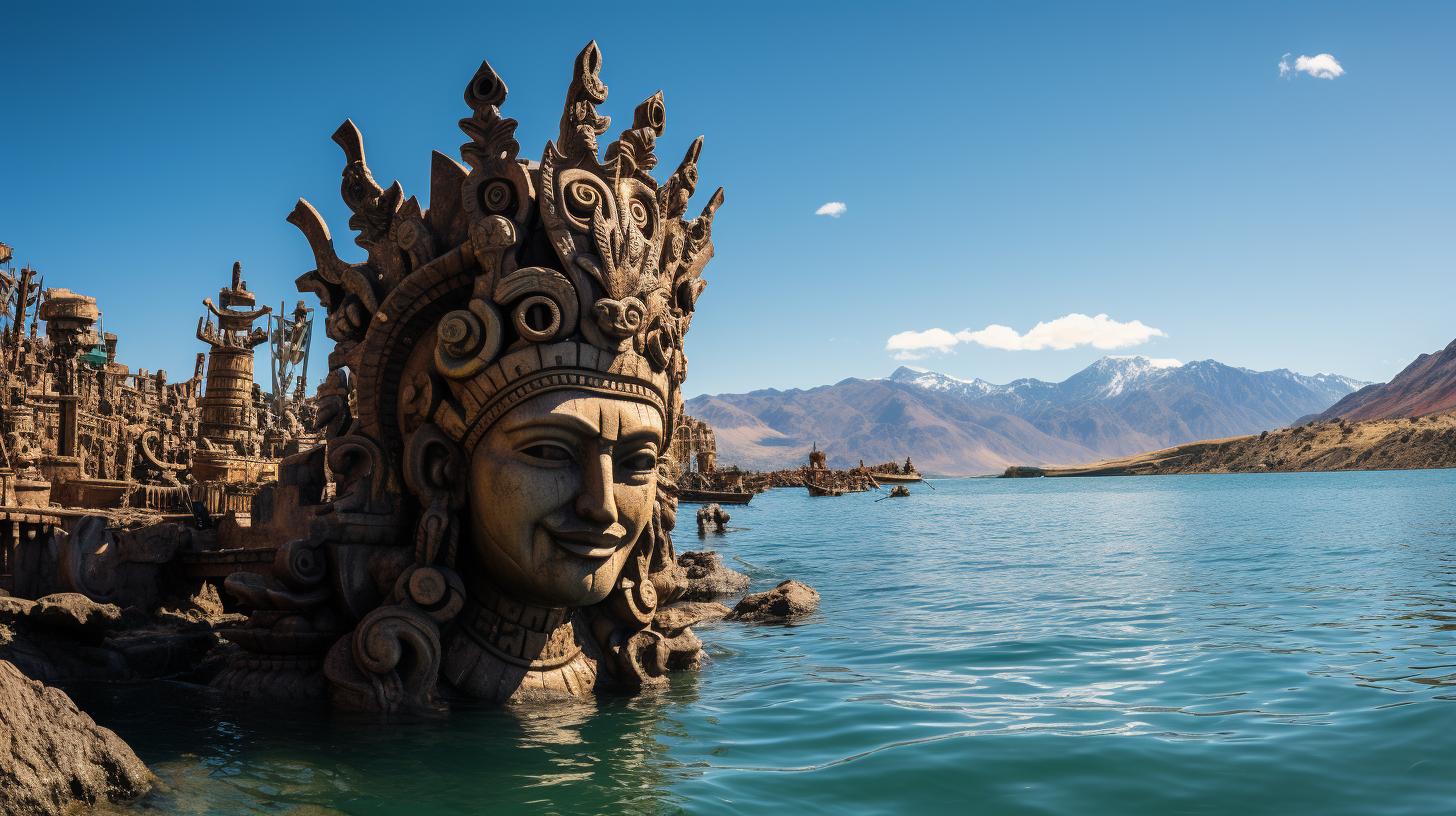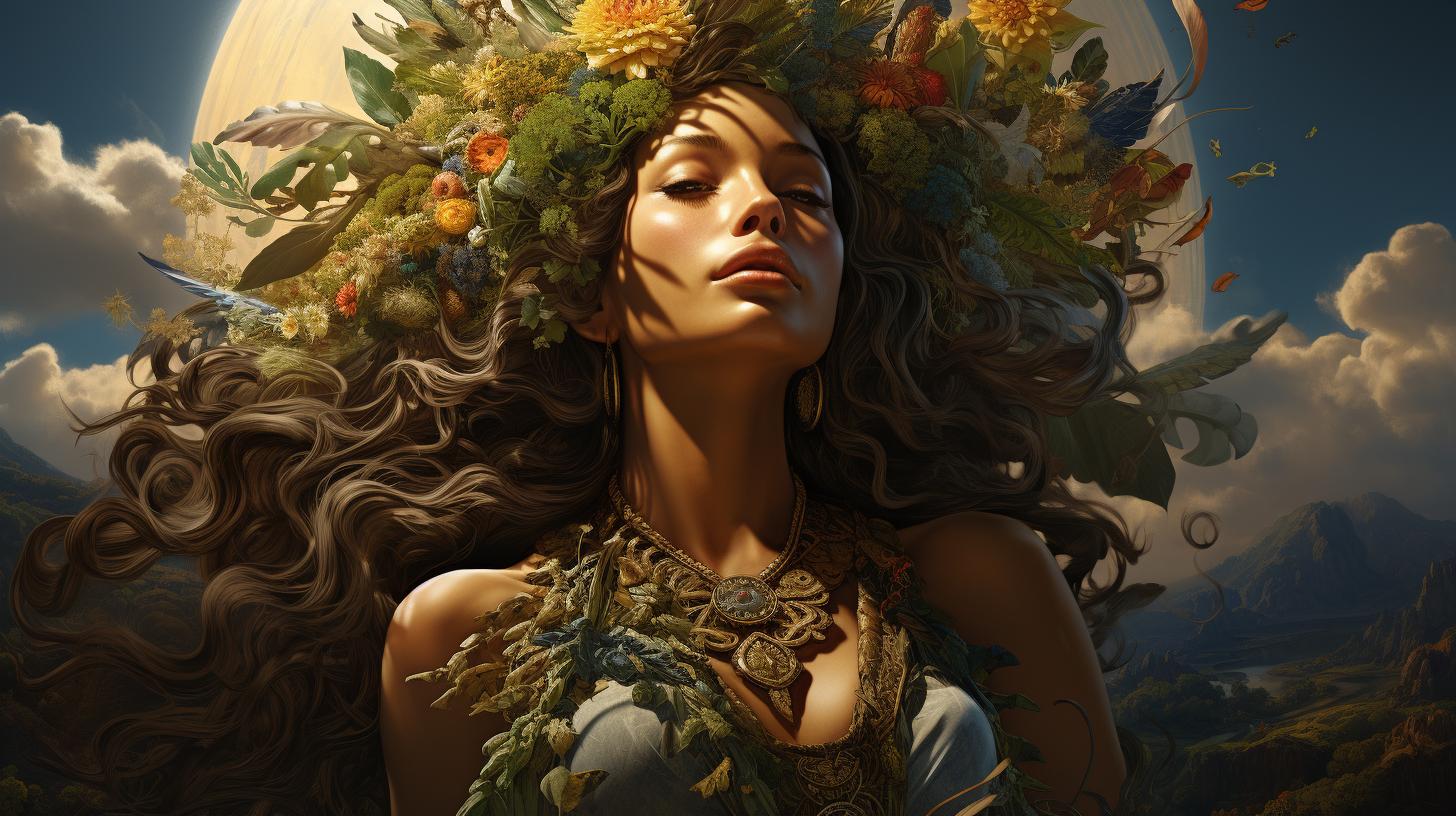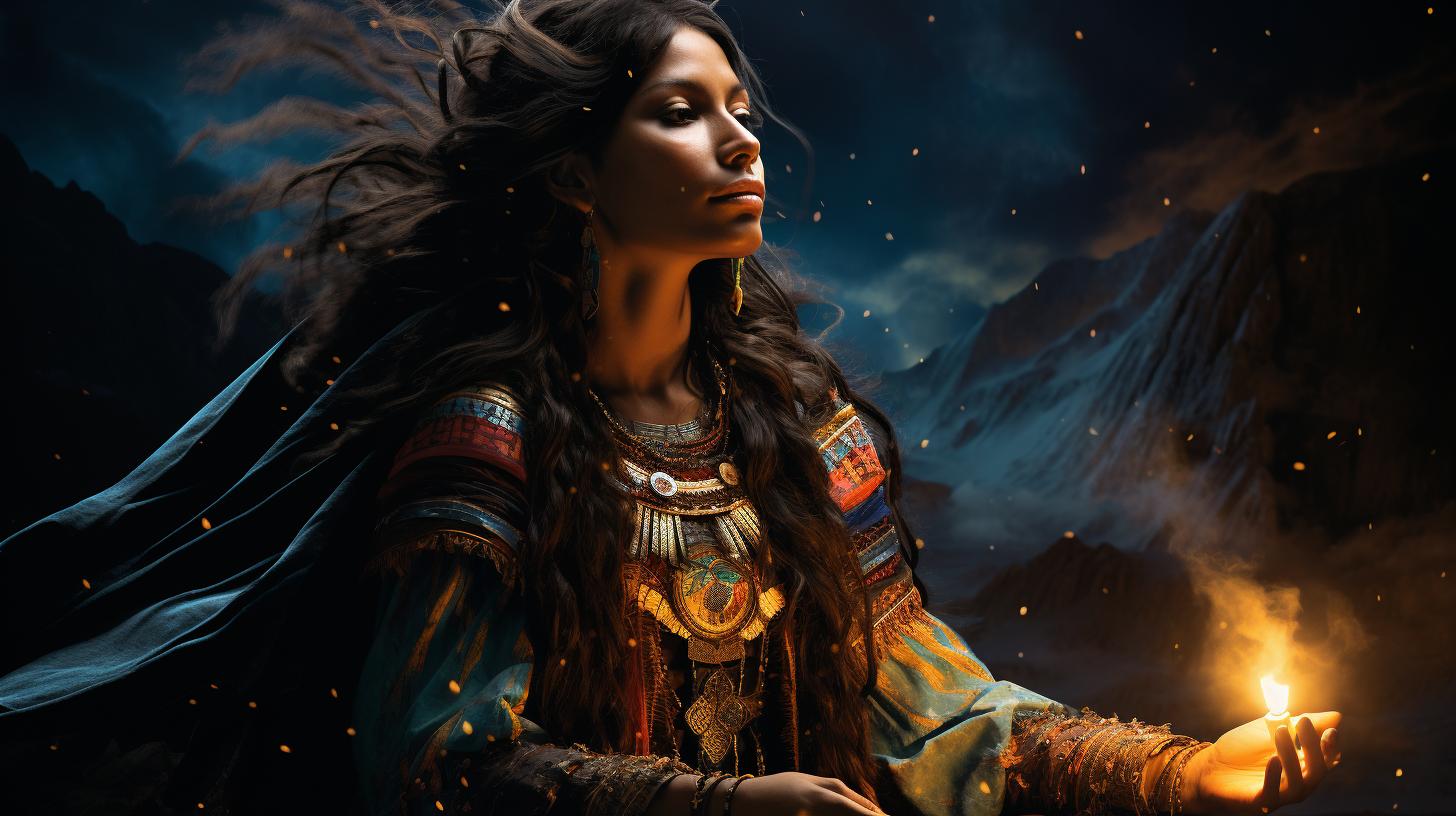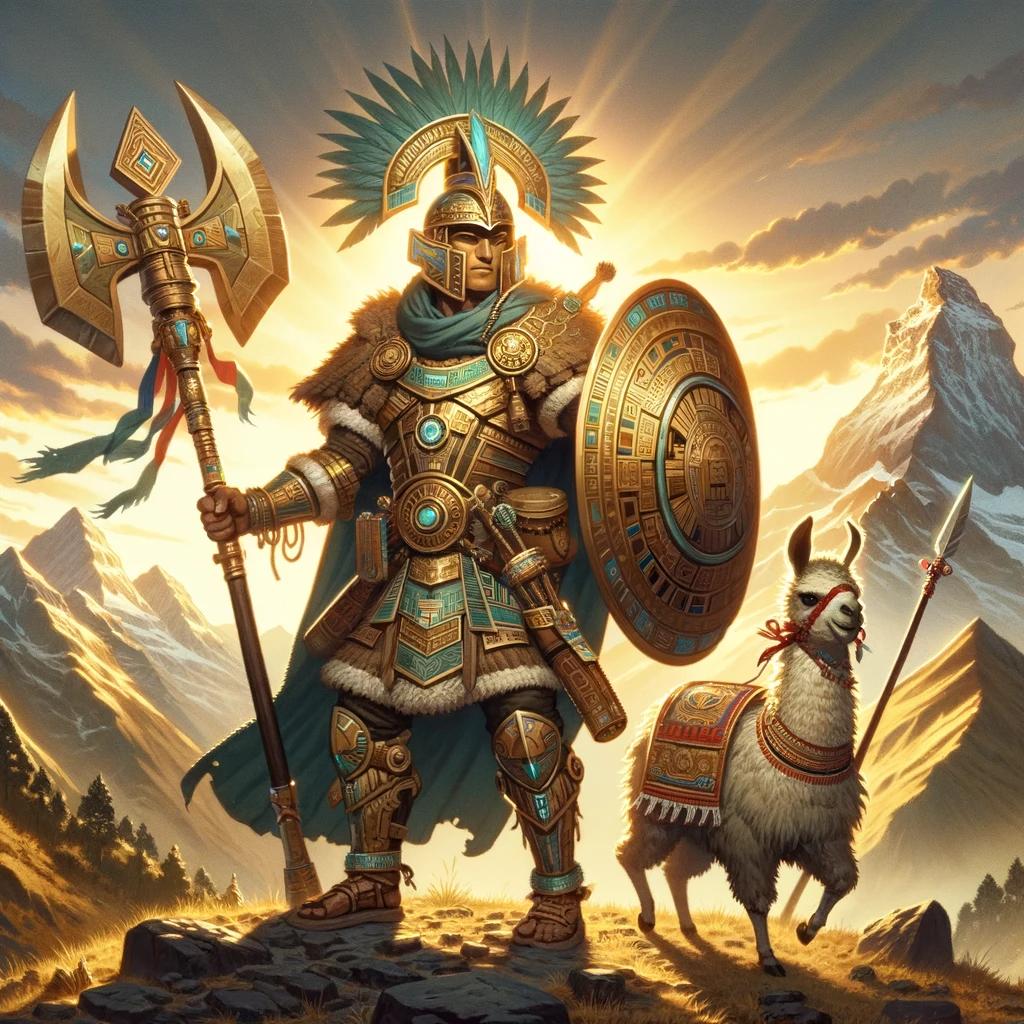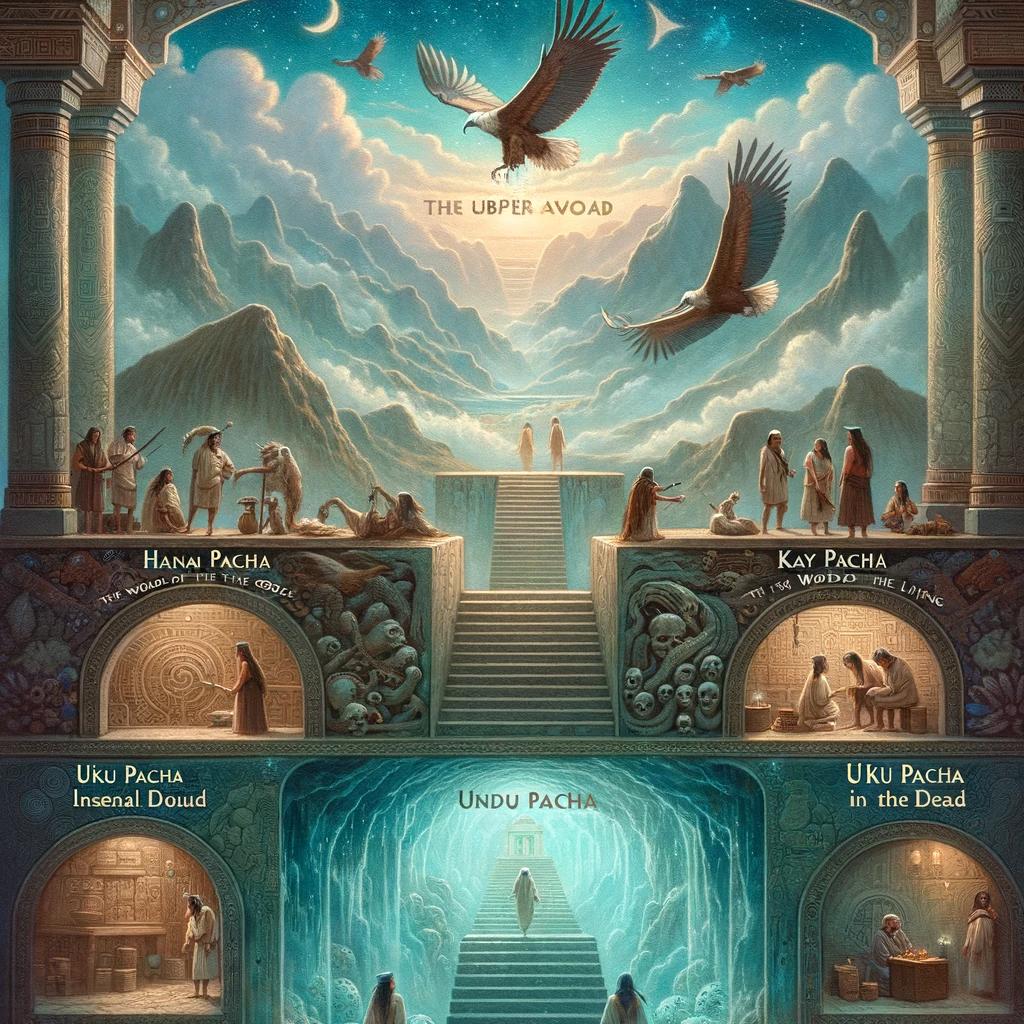What Did Manco Capac Achieve: Unveiling the Contributions of the Inca Leader
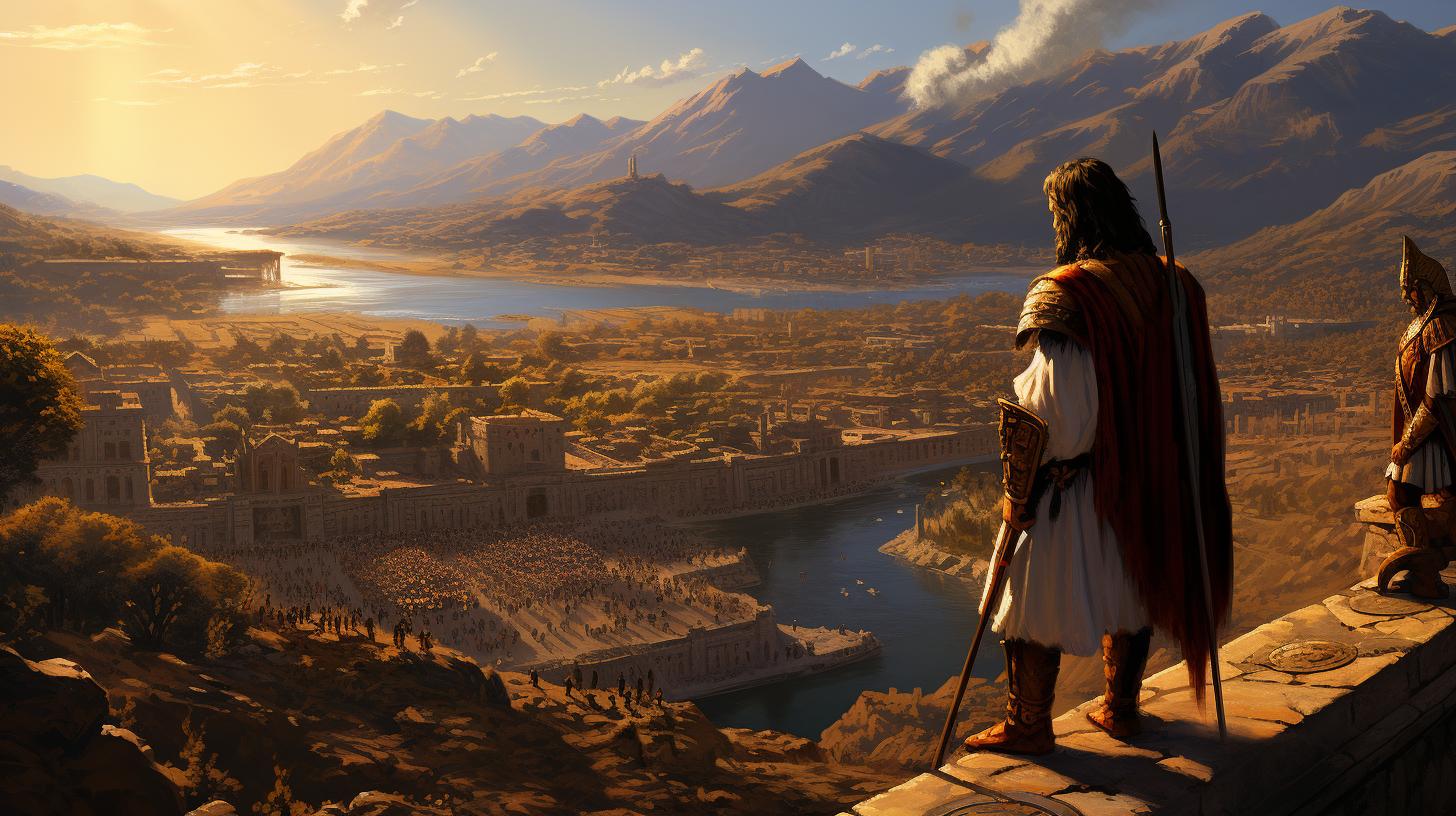
Manco Capac, along with his wife Mama Ocllo, played a significant role in the establishment of the Inca Empire. They emerged from Lake Titicaca and founded the city of Cuzco, creating the first Inca Trail.
Manco Capac’s leadership led to the division of Cuzco into two ethnic sections and the unification of the Inca people under one religion. He also introduced important agricultural and construction techniques, while Mama Huaco taught women textile arts.
Their son Cinchi Roca was raised as his successor, marking the beginning of a long lineage of Inca rulers.
The Legend of Manco Capac and Mama Ocllo
In the captivating legend of the Inca origins, Manco Capac and his wife and sister, Mama Ocllo, were sent by the god of the sun to bring order and civilization to humanity.
According to the ancient tale, they emerged from the mystical Lake Titicaca and embarked on a journey towards the north. Their mission was to establish a city that would serve as the foundation of the mighty Inca Empire.
The extraordinary tale of Manco Capac and Mama Ocllo holds a significant place in the folklore of the Inca civilization. As the first Inca leaders, their actions laid the groundwork for the rich history and cultural heritage that would shape the Inca people and their reign.
Accompanied by their brothers and sisters, Manco Capac and Mama Ocllo emerged from a sacred cave in the Valley of Cuzco. It is believed that this divine emergence symbolized the birth of a new era, marking their divine connection with the gods.
Their arrival marked the beginning of a transformative journey that would forever change the fate of the region.
Guided by their divine purpose, Manco Capac and Mama Ocllo diligently carried out their mission to civilize the land.
They established the city of Cuzco, a magnificent settlement nestled amidst the breathtaking Andean landscape. This visionary act not only established the first Inca Trail but also created a central hub that would later become the heart of the Inca Empire.
The tale of Manco Capac and Mama Ocllo speaks volumes about their role as pioneers and cultural icons. Their legendary journey and the foundation of Cuzco elevated their status to that of revered leaders who brought forth knowledge, order, and progress to an ancient land.
Emergence of Manco Capac and Mama Ocllo from Lake Titicaca
In the legend of Manco Capac, it is believed that he and his wife-sister, Mama Ocllo, were sent by the sun god to bring order and civilization to humanity. Their journey began when they emerged from the mystical Lake Titicaca in the Andes Mountains.
Manco Capac and Mama Ocllo embarked on a northward journey, guided by divine providence, to fulfill their mission. Their destination was the fertile lands where they would lay the foundation for a great empire.
They were accompanied by their siblings, who were also important figures in the Inca lore.
As they emerged from the lake, Manco Capac and Mama Ocllo carried with them the knowledge and wisdom bestowed upon them by the gods.
They possessed the skills necessary to guide their people towards a prosperous and civilized existence.
It was in this moment, upon their emergence from the depths of Lake Titicaca, that Manco Capac and Mama Ocllo began their divine quest to establish a society that would endure for centuries to come.
The Journey North and the Founding of Cuzco
After emerging from Lake Titicaca, Manco Capac and Mama Ocllo embarked on a momentous journey northwards. Their mission was to bring order and civilization to the humanity as guided by the Sun God.
Along with their siblings, they made their way towards the fertile valleys of the Cuzco region.
Upon reaching the Valley of Cuzco, Manco Capac took a visionary step by dividing the city into two distinct sections based on ethnicity: Hunan Cuzco and Hurin Cuzco.
This division, while reflecting the cultural diversity of the Inca people, also served as a means to foster a harmonious coexistence and promote unity among its inhabitants.
The founding of Cuzco marked a significant turning point in the history of the Inca civilization.
As the capital city of their empire, it became the epicenter of political, religious, and economic activities. Manco Capac’s leadership and strategic planning laid the groundwork for the prosperous society that would emerge.
Under Manco Capac’s guidance, the Inca people began construction projects to establish the necessary infrastructure for their growing society. They mastered techniques of architecture and engineering, utilizing the resources available in the region to build impressive structures such as temples and fortresses.
Moreover, Manco Capac recognized the importance of agriculture for the sustenance of his people. He introduced innovative farming methods, including terrace farming, to optimize land use and ensure sufficient food production.
His knowledge of irrigation systems also played a crucial role in maintaining the fertility of the valleys surrounding Cuzco.
In addition to the physical development, Manco Capac instilled a sense of spirituality among his people.
He introduced a unified religion that emphasized the worship of the Sun God and established temples where rituals and ceremonies took place. These spiritual practices became an integral part of Inca society, providing a moral compass and a strong sense of community.
The journey north and the subsequent founding of Cuzco not only laid the foundation for the Inca civilization but also set the stage for future generations of Inca rulers. Manco Capac’s profound influence extended beyond his immediate reign, shaping the cultural and societal fabric of the empire for centuries to come.
Division of Cuzco: Hunan Cuzco and Hurin Cuzco
Once Manco Capac established the city of Cuzco, he implemented a division that would shape the societal structure of the Inca people. He divided Cuzco into two sections: Hunan Cuzco and Hurin Cuzco.
Hunan Cuzco, also known as Upper Cuzco, was designated for the nobility and higher-class individuals. This section housed the ruling class, including priests, military leaders, and important administrators. Hunan Cuzco was considered the political and religious center, where important ceremonies and rituals took place.
It was a symbol of power and authority within the Inca society.
On the other hand, Hurin Cuzco, or Lower Cuzco, was the residential area for the common people. It was predominantly inhabited by farmers, craftsmen, and general citizens. Hurin Cuzco was the bustling heart of the city, where daily activities occurred, such as trading, community gatherings, and cultural events.
While not as prestigious as Hunan Cuzco, it played a vital role in supporting the overall functioning of the Inca society.
The division of Cuzco into Hunan Cuzco and Hurin Cuzco reflected the hierarchical structure of Inca society. It emphasized the distinction between the ruling elite and the general population.
This division also resulted in separate spheres of influence and responsibilities, with Hunan Cuzco holding the highest positions of power and authority.
Through this division, Manco Capac sought to establish a clear social order and solidify his rule over the Inca people. The creation of Hunan Cuzco and Hurin Cuzco was a crucial step in organizing and governing the burgeoning Inca civilization, laying the foundation for the future growth and expansion of the Inca Empire.
Uniting the Inca People through Religion
One of Manco Capac’s significant achievements was the unification of the Inca people under a single religion. Recognizing the importance of collective beliefs in fostering a cohesive society, he introduced and established a religious system that played a central role in Inca culture.
Manco Capac’s religious reforms involved the establishment of cults, temples, and rituals throughout the Inca territory. These religious sites served as places of worship and communal gathering, fostering a sense of shared identity and purpose among the Inca people.
The religious teachings of Manco Capac emphasized the worship of deities associated with natural elements, such as the sun, moon, and earth. Through this emphasis on nature, he sought to deepen the connection between the Inca people and their environment, instilling a sense of reverence and gratitude for the world around them.
In addition to creating a unified religious framework, Manco Capac also implemented religious practices that reinforced social norms and values. Through rituals and ceremonies, he promoted concepts of communal harmony, respect for authority, and the importance of duty to one’s community.
Furthermore, Manco Capac’s religious reforms served as a means to solidify his authority and legitimacy as the first Shapa Inka. By positioning himself as the intermediary between the divine and the Inca people, he sought to establish a spiritual and political connection that further cemented his role as the leader of the Inca society.
The unification of the Inca people through religion played a crucial role in establishing a sense of collective identity and purpose. It fostered social cohesion, strengthened the authority of the Inca rulers, and contributed to the stability and longevity of the Inca Empire.
Manco Capac’s Contributions to Agriculture and Construction
Manco Capac played a pivotal role in the development of agriculture and construction techniques within the Inca society. Recognizing the importance of a reliable food source, he taught his people innovative agricultural practices that would sustain their growing population.
Under his guidance, the Inca mastered the art of terrace farming, which allowed them to cultivate crops on steep hillsides and maximize their yield.
In addition to agriculture, Manco Capac also emphasized the importance of construction in creating a thriving civilization.
He introduced basic architectural principles and techniques, teaching his people how to build strong and durable structures. The Inca developed advanced masonry skills, constructing intricate stone buildings and walls that withstood the test of time.
- Manco Capac’s agricultural contributions:
- Promoted terrace farming to maximize crop production
- Introduced effective irrigation systems to ensure water supply for cultivation
- Implemented crop rotation methods for sustainable agriculture
- Shared knowledge of natural fertilizers and soil management practices
- Manco Capac’s construction contributions:
- Introduced advanced masonry techniques for solid and long-lasting structures
- Developed methods for precise stone cutting and fitting
- Introduced the concept of architectural planning and design
- Supervised the construction of temples, palaces, and other important buildings
Through his contributions to agriculture and construction, Manco Capac laid the foundation for a prosperous and advanced Inca society.
His teachings and techniques allowed the Inca to not only thrive in their immediate environment but also expand their influence throughout the region.
Mama Huaco and Women’s Skills in Textile Arts
Mama Huaco, the wife of Manco Capac, played a crucial role in the development and preservation of textile arts in the Inca society.
She taught women the intricate skills of weaving and spinning, passing down the knowledge from one generation to another.
Under Mama Huaco’s guidance, textile production became not only a practical necessity but also a revered art form.
The women of the Inca civilization used techniques such as backstrap and warp-faced weaving to create intricate textiles adorned with vibrant colors and complex patterns.
The textiles produced by the women had various purposes and symbolism.
They were used for clothing and adornment, as well as for religious and ceremonial purposes. Mama Huaco ensured that these textiles reflected the cultural and spiritual values of the Inca people.
Women were highly regarded for their textile skills, and their creations held great significance within the society. The mastery of textile arts allowed women to express their creativity and contribute to the overall cultural identity of the Inca civilization.
Textile Techniques
The women were skilled in various textile techniques, including spinning, dyeing, and weaving. They meticulously spun fibers such as wool, alpaca, and cotton into fine threads, which they then dyed using natural materials extracted from plants and minerals.
Weaving involved the use of backstrap looms, where intricate patterns were created by carefully manipulating the warp and weft threads. The women demonstrated exceptional skill and creativity in producing textiles with finely woven motifs, geometric designs, and symbolic representations.
Symbolism and Meaning
Textiles held deep symbolism within the Inca culture. The designs and patterns often conveyed stories, myths, and religious beliefs. They also represented social status and played a role in various ceremonies and rituals.
The incorporation of specific motifs, such as animals, plants, and celestial symbols, carried spiritual significance. These symbols connected the Inca people with their natural surroundings and the divine forces they believed in.
Furthermore, the colors used in the textiles held meanings as well. Vibrant hues were associated with vitality, energy, and abundance, while more muted tones represented tranquility and harmony.
Legacy and Impact
Mama Huaco’s teachings and the skillful textile creations of the Inca women left a lasting legacy.
The textiles became highly sought after and served as a form of currency and status symbol within the Inca society.
Even centuries later, the intricate textile techniques and designs of the Inca civilization continue to inspire and fascinate people around the world.
The preservation and revival of these traditional arts contribute to the rich cultural heritage of the Andean region.
Succession Planning: The Birth of Cinchi Roca
After establishing the foundations of Inca society, Manco Capac and Mama Huaco focused on securing a stable succession plan. Their efforts culminated in the birth of their son, Cinchi Roca, who was carefully raised to follow in his father’s footsteps as the future leader of the Inca people.
Significant festivities marked the milestones in Cinchi Roca’s life. Among them was his first major ceremony, the ceremonial haircut, where the lords of the kingdom declared him the grandson of the Sun.
This symbolic act reinforced Cinchi Roca’s elevated status and prepared him to assume the responsibilities that awaited him as the next leader.
As Cinchi Roca grew, a momentous event took place – his investiture as a knight, accompanied by the presentation of royal garments.
In this important ceremony, it was made clear to Cinchi Roca that he would soon be expected to marry and assume his father’s responsibilities.
The search for a suitable wife commenced, and they found Mama Chura, a woman of exquisite beauty, who would become Cinchi Roca’s spouse.
This union brought great happiness to Manco Capac, as it ensured the continuation of the Inca lineage. From this point forward, all descendants of Manco Capac would be known as incas, perpetuating his legacy.
Cinchi Roca’s birth and upbringing underscored the importance of lineage, succession, and the preservation of Inca traditions. The careful planning surrounding his early life ensured a seamless transition of power and leadership from father to son, maintaining the stability and cultural continuity of the Inca civilization.
Festivities and Celebrations in Cinchi Roca’s Life
Cinchi Roca, the son of Manco Capac and Mama Huaco, was raised with great importance and honor as the designated successor to his father’s leadership. Throughout his life, various festivities and celebrations marked significant milestones, reinforcing his role as the future ruler of the Inca people.
One of the most memorable celebrations occurred during Cinchi Roca’s early years when the lords of the kingdom gathered to perform his first haircut. This ceremonial event held immense significance as it symbolized his official recognition as the grandson of the sun.
The cut hair was carefully preserved, symbolizing his connection to divine power and leadership.
As Cinchi Roca continued to grow, another remarkable celebration took place to mark his investiture as a knight.
During this event, he was presented with his royal attire, showcasing his esteemed position and responsibilities. The attending lords and nobles emphasized the importance of his future role as a leader, ensuring that he understood the weight of his duties and obligations.
Part of securing Cinchi Roca’s future involved finding a suitable wife for him. In this regard, a search for a beautiful woman named Mama Chura took place, with the intention of marrying her to Cinchi Roca.
The successful union brought joy to Manco Capac, as it ensured the continuation of their noble lineage. It also solidified Cinchi Roca’s status as a future Inca ruler and cemented his place within the royal hierarchy.
The festivities and celebrations surrounding Cinchi Roca’s life demonstrated the collective importance placed on his succession. The Inca people recognized the significance of guaranteeing a strong and legitimate successor, ensuring the continuity of their society and traditions.
Legacy of Manco Capac: Descendants and the Inca Name
Manco Capac’s impact extended beyond his own lifetime, as his descendants continued his legacy and solidified the Inca name. His son, Cinchi Roca, became the second ruler of the Inca Empire, carrying on the traditions and teachings instilled by his father.
The importance of lineage in Inca society meant that future rulers would also bear the name “Inca” as a testament to their direct descent from Manco Capac.
The Inca lineage, stemming from Manco Capac, would reign for many generations, leaving an indelible mark on the history of the Andean region.
Each successive Inca ruler built upon the foundations established by their ancestors, further expanding the territories under Inca control and implementing their own policies and advancements. The Inca Empire reached its peak during the reign of leaders such as Pachacuti and Huayna Capac, who expanded its borders and consolidated its power.
Despite the eventual downfall of the Inca Empire due to Spanish conquest, the memory of Manco Capac and his descendants lives on in historical records, legends, and the hearts of the Andean people.
Garcilaso de la Vega, known as El Inca, documented these stories and continued the oral tradition of preserving the history of the Incas. The noble Quechua writer, Felipe Guaman Poma de Ayala, also contributed to the preservation of the Andean and Incaic history with his detailed accounts.
The story of Manco Capac showcases not only his own achievements but also the enduring legacy of the Inca rulers and the profound impact they had on the civilization of the Andean people.
Their contributions to religion, society, agriculture, architecture, and governance continue to fascinate and inspire researchers, historians, and those interested in the rich cultural heritage of the Inca Empire.
.











